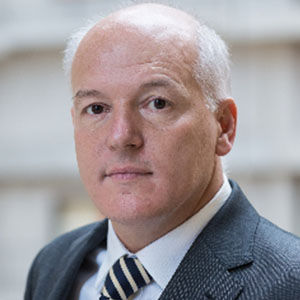28
Oct
2020
18:00
GMT
Webinar
AV Synchronous Leadless Pacing: The Next Step in the Journey
-
Views:
 22
22
-
Likes:
 0
0
Overview
In this webinar, experts will talk about the latest evidence on leadless pacing and the newest addition to the leadless pacing portfolio: Micra AV. This will include research and feasibility studies, latest data and patient selection considerations.
Faculty:

Lucas Boersma

Chris Pepper

Clemens Steinwender
This webinar is supported by

Agenda
Learning objective
- The results of the latest Micra clinical studies with Micra VR, reflecting the real-world results, 5 years after it was first launched in Europe
- The studies that resulted in the development of Micra AV (the second-generation leadless pacemaker, designed to provide AV Synchrony), which has been recently introduced in Europe, the early experience and patient selection considerations
Audience
- Cardiologists and electrophysiologists not involved in the implantation of leadless pacemakers, but who have patients who could benefit from the therapy.
- Cardiologists implanting or planning to implant leadless pacemakers.
Faculty Biographies

Lucas Boersma
Dr Lucas Boersma is a cardiologist/electrophysiologist at St. Antonius Hospital Nieuwegein and a Professor of Cardiology at the University of Amsterdam. In his research, Dr Boersma has primarily focused on transcatheter treatment of atrial fibrillation.

Chris Pepper
Chris Pepper is Consultant Cardiologist and Electrophysiologist at Leeds Teaching Hospitals NHS Trust and Clinical Director of Cardiorespiratory medicine. He has been Involved with Micra since the European launch and is a Micra training faculty member. His research interests include participation in multicentre studies of catheter ablation for AF, alternate site pacing and the role of leadless pacing.

Clemens Steinwender
was educated at the Medical University of Vienna and since 2013 he is Head of the Department of Cardiology at the Kepler University Hospital in Linz, Austria. His main scientific focus is on device therapy and ablation of arrhythmias. Clemens Steinwender has been and is involved in several clinical trials on leadless pacing, like the Micra TPS or MARVEL 2 studies.
Key References
1. Duray G et al. Long-term performance of a transcatheter pacing system: 12-Month results from the Micra Transcatheter Pacing Study. Heart Rhythm 2017; 14: 702-709
2. Roberts P et al. A leadless pacemaker in the real-world setting: The Micra Transcatheter Pacing System Post-Approval Registry. Heart Rhythm 2017; 14: 1375-1379
3. Reynolds D et al. A leadless Intracardiac Transcatheter Pacing System. N Engl J Med 2016; 374(6): 533-541
4. Ritter P et al. The rationale and design of the Micra Transcatheter Pacing Study: safety and efficacy of a novel miniaturized pacemaker. Europace 2015; 17(5): 807-813
5. Piccini JP et al. Patient selection, pacing indications, and subsequent outcomes with de novo leadless single-chamber VVI pacing. Europace 2019; 21: 1686-1693
6. Chinitz LA. Accelerometer-based atrioventricular synchronous pacing with a ventricular leadless pacemaker: Results from the Micra atrioventricular feasibility studies. Heart Rhythm 2018; 15: 1363–1371
7. Steinwender C. Atrioventricular synchronous pacing using a leadless ventricular pacemaker: Results from the MARVEL 2 study. JACC Clin Electrophysiol. 2020; 6(1): 94-106
8. Garweg C. Predictors of Atrial Mechanical Sensing and Atrioventricular Synchrony with a Leadless Ventricular Pacemaker: Results from the MARVEL 2 Study. Heart Rhythm. Journal pre-proof.





